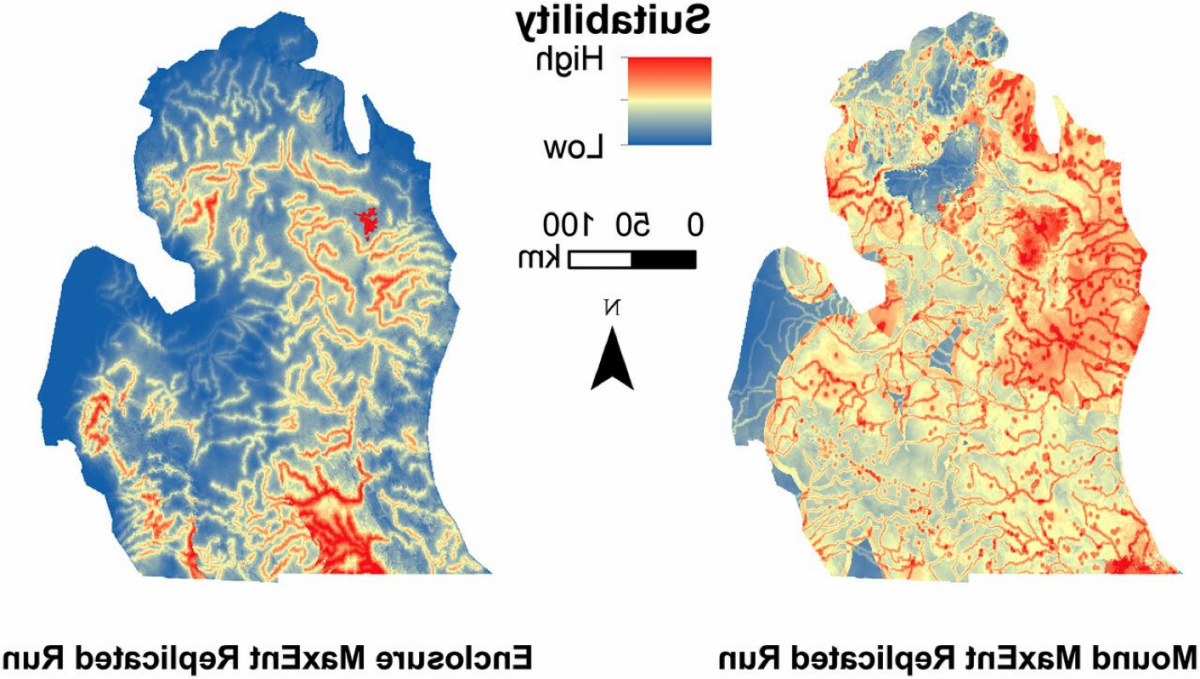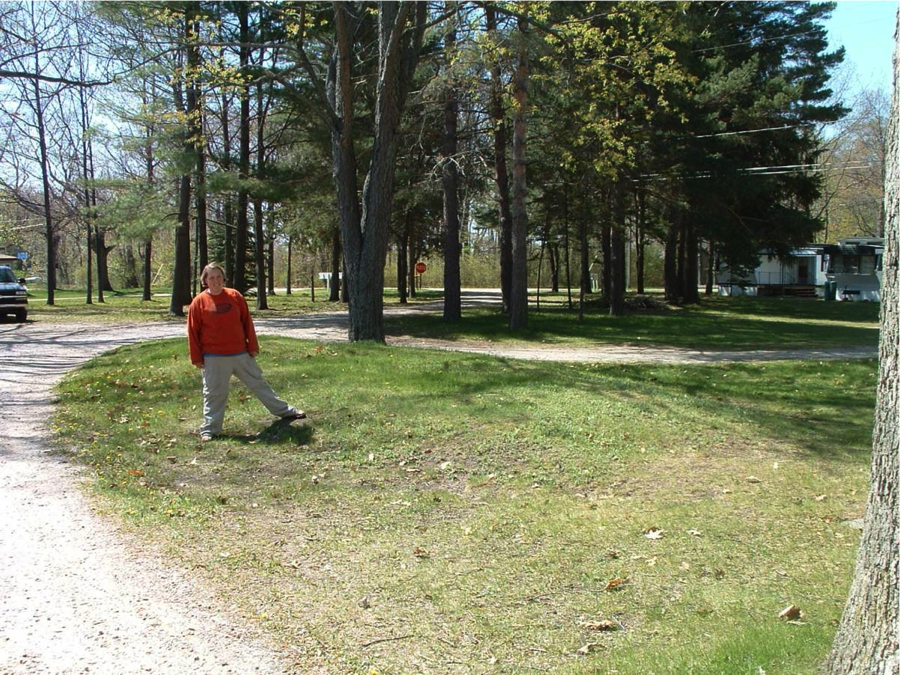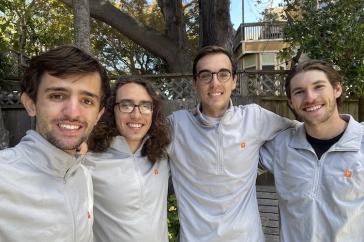
Merging an innovative modeling technique with old-fashioned sleuthing, 永利app新版本官网地址的研究人员为密歇根州前欧洲考古遗址的神秘面纱提供了新的线索, even though most of the sites they’re studying no longer exist. The work, published recently in the journal PNAS, 提供了一个重要的新工具,在一个领域,许多古迹已经永远失去了现代发展.
The researchers — associate professor of anthropology Meghan Howey and associate professor of Earth and geospatial science Michael Palace, both of UNH, 和阿姆斯特丹大学的克里斯托·麦克迈克尔(Crystal McMichael),他曾是Palace的博士后研究员,试图更好地了解密歇根州两种不同类型的土建筑的作用. These burial mounds and circular earthwork enclosures, which generally date to the Late Precontact period of 1,000 – 1,600 A.D., are common across the eastern U.S. but have mystified generations of anthropologists.

“了解景观的这种重新配置如何影响社会发展对考古学来说是一个巨大的挑战,” says Howey, who is the James H. Hayes and Claire Short Hayes Professor of the Humanities. “我们的目标是确定哪些空间和环境变量对这些纪念碑的放置很重要.”
Utilizing a modeling technique called Maximum Entropy, or MaxEnt, borrowed from landscape ecology, 研究人员确定,这两种类型的纪念碑在景观中占据着不同的壁龛. Burial mounds were located near inland lakes, probably to serve local needs like food, shelter and community, 而圆形土方围场——有些比足球场还大——则位于河流附近.
“These enclosures became these shared ritual spaces. They were on rivers so they were accessible to multiple groups,” says Howey, 他补充说,独木舟沿着密歇根州的主要河流行驶,使祖先Anishinaabeg人能够长途运输自己和他们的货物.
“了解景观的这种重新配置如何影响社会发展对考古学来说是一个巨大的挑战.”
正是研究人员的跨学科方法解开了这些纪念碑的一些秘密, up to 80 percent of which have been destroyed. Howey, who has studied Late Precontact monuments in Michigan for more than a decade, 仔细研究了考古档案,建立了一个记录密歇根州土丘和围墙的数据库. 在60个围场地点和261个土墩地点中,她的深度档案潜水揭示了这一点, only an estimated 13 enclosures and 45 mounds exist today.
虽然使用科学家们称之为“只存在”的数据——只使用你知道存在的数据——对考古学家来说可能是一个挑战, "field biologists deal with that presence-only situation a lot," says Palace, 联合国大学地球科学系遥感和地理空间科学专家 Institute for the Study of Earth, Oceans, and Space (EOS). "Just because you don’t hear a bird doesn’t mean it’s not there." He suggested harnessing the power of MaxEnt, inputting environmental values like topography, temperature, 降雨和距离湖泊或河流的距离,从现有的和档案的纪念碑模型“栖息地”为额外的纪念碑.

“当我们把纪念碑建筑的文化过程变成一种‘物种’时,, you could see the patterns pop," says Howey, one of the few social scientists affiliated with EOS. “这真的很酷,你可以通过有限的档案记录,从这些不完美的记录中讲述一个永利app新版本官网地址过去的新故事, limited datasets. 这是一种惊人的思想融合,达到了宏观景观生态学的水平."
Indeed, Howey recalls that it was McMichael 他不是人类学家,而是古生态学家,他在回顾数据后首次将土丘与湖泊和围栏与河流联系起来. "Interdisciplinary work pulls you out of your tunnel vision," Howey says.
贝勒斯本科学习的是考古学,她也对豪伊的跨学科热情表示赞同. “我非常喜欢有机会跨学科工作,并涉足考古领域," he says. The two will expand this modeling approach, 由美国国家航空航天局太空考古资助,研究密歇根内陆湖泊玉米的兴起, to the entire Great Lakes region. 豪伊称这是一个未被充分研究和重视的考古领域.
他们创新地使用MaxEnt在没有现有遗址的情况下回答考古谜题,这越来越受欢迎. "As development continues across the globe, and more and more ancient sites, including monuments, are erased by plows and heavy machinery, archival data may someday be the only surviving information," says Howey. "Modeling approaches like MaxEnt, which work well with limited data sets, 会成为考古学家探索过去的重要工具吗."
This research was supported by NASA Space Archaeology and an American Council of Learned Societies Digital Innovation Fellowship.
-
Written By:
Beth Potier | UNH Marketing | beth.potier@ngskmc-eis.net | 2-1566



















































